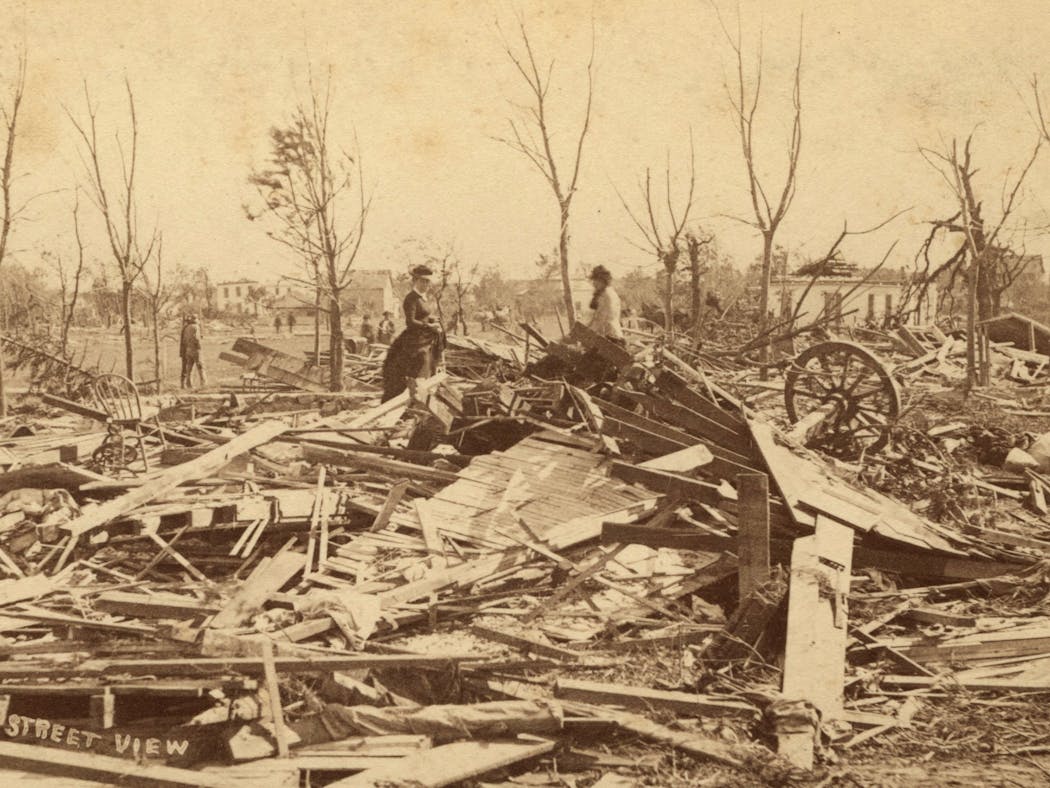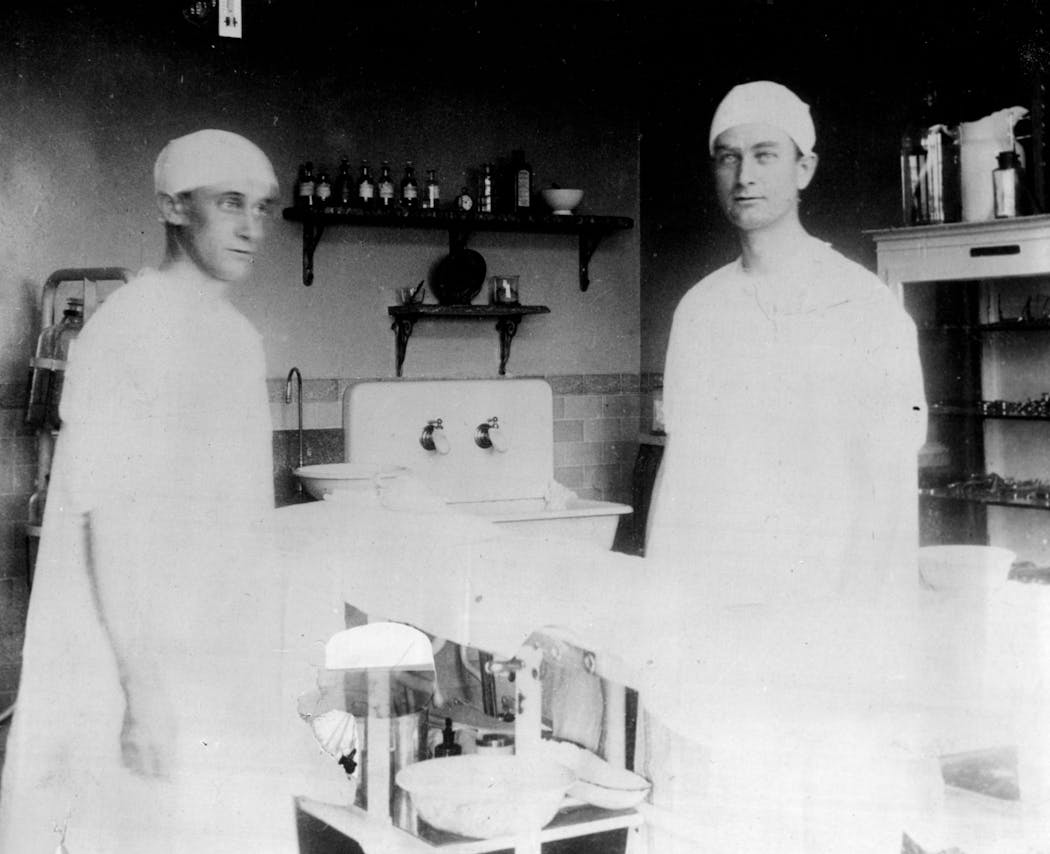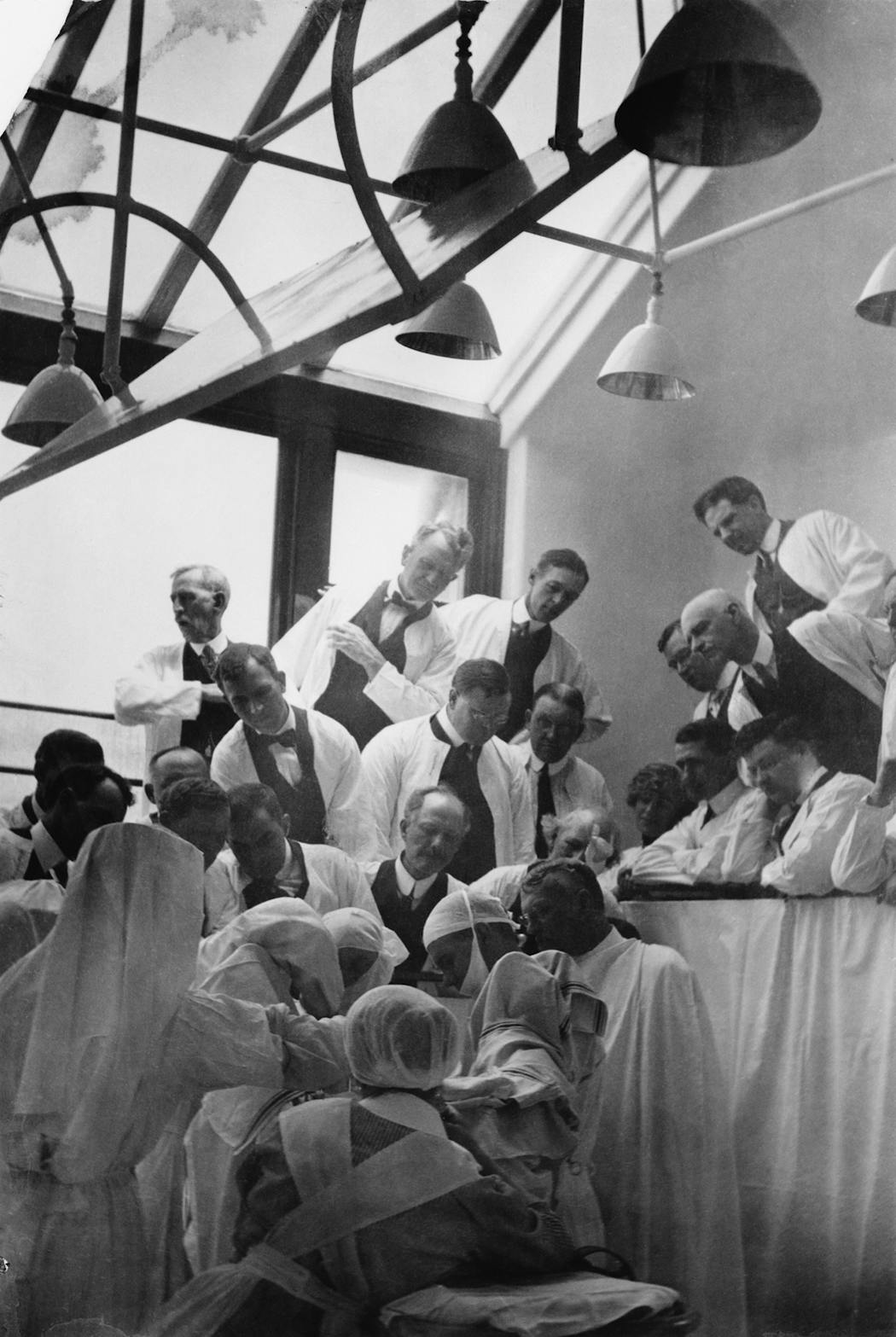How Mayo Clinic became one of the world's most famous medical centers
Listen and subscribe to our podcast: Apple Podcasts | Spotify
More than a million people each year receive treatment at Mayo Clinic, the small southern Minnesota hospital that grew into an international destination.
Mayo's footprint in Rochester is expanding and it has growing campuses in Florida and Arizona. Patients from nearly 130 countries visit the clinic, which is considered one of the most respected and well-known medical institutions in the world.
How did this "clinic in a cornfield" become internationally prestigious? A reader sought answers from Curious Minnesota, the Star Tribune's reporting project fueled by reader questions.
The short answer is that Mayo attracted worldwide attention from its earliest days because of innovations that ensured patients survived surgeries. The clinic has since built a patient-focused reputation stemming largely from strong collaboration among the many specialists and other staff overseeing treatment.
Mayo has been ranked the No. 1 hospital in the world for the past five years in the global hospital rating by Newsweek and Statista. Other institutions topping the list include the Cleveland Clinic, Massachusetts General Hospital and Johns Hopkins Hospital.
The high-quality care also comes with a bigger price tag.
The average cost of health care for a patient at Mayo Clinic — $1,236 — is almost twice the Minnesota average, according to a 2022 study by Minnesota Community Measurement.
The founding of Mayo Clinic
The idea for Mayo Clinic emerged after a devastating tornado destroyed nearly a third of Rochester in 1883. Physician William Worrall Mayo and his two sons took care of injured survivors. They were joined in the relief effort by the Sisters of Saint Francis, led by Mother Alfred Moes.
After the crisis, Moes suggested her congregation join forces with the Mayo family to build a hospital together. The result was Saint Marys Hospital — the predecessor of Mayo Clinic — which opened in 1889.
The Mayo brothers, Will and Charlie, became the backbone of the clinic after graduating from medical school.
"They were in the right place at the right time," said W. Bruce Fye, emeritus professor of medicine and history of medicine at Mayo Clinic. "And they had the right support structure with the sisters who basically gave them a hospital and staffed the hospital for them."
It wasn't long before the young hospital became internationally renowned for the low mortality rates of its surgeries. Surgery still had a 25% to 30% mortality rate in the late 1890s. But it was less than 2% at Saint Marys, according to an 1893 hospital report.
This was largely due to the hospital's early adoption of aseptic techniques — a practice that prevents contamination from germs — and the nurses' careful attention to preventing post-surgery infection. Word soon spread about the brothers' surgical skills and the sisters' compassionate care.
Physicians traveled from other states and countries to observe surgeries at "the Mayos' clinic." A Johns Hopkins surgeon, Harvey Cushing, once described the clinic as "a Mecca for medical men." Investigative journalist Samuel Hopkins Adams wrote in 1905 that the Mayo brothers' hospital "handles more surgical cases annually than any institutions in the United States."
About 40% of Saint Marys patients were born outside of America in the 1890s. Men and women traveled to Rochester from ever greater distances as train tracks fanned out across the country.
In 1914, the Mayo brothers moved into a new building with more exam rooms, laboratories and surgical dressing suites. This is when the name "Mayo Clinic" was formalized, which at the time indicated that it was a place for education, according to a 2009 Mayo Clinic article.
"Many patients experienced modern medicine for the first time as diagnosticians used different technologies to examine their bodies and bodily fluids," Fye wrote in a 2010 paper about the origins of Mayo Clinic.
Mayo Clinic received its 1 millionth patient in 1938 when Maude Neale Lumsden traveled from Salmo, British Columbia. Many prominent patients have received treatment there, including baseball great Lou Gehrig, former President George H.W. Bush and the royal family of Saudi Arabia.
A team approach
Fye said one of the Mayo brothers' secrets of success was "there were two of them."
While most doctors in the United States were in solo practice, the Mayo brothers could take turns. One traveled to learn new practices and attended medical meetings; the other stayed home to run the clinic.
The mutual support between the brothers and the nuns also infused a teamwork spirit into Mayo Clinic's DNA. It represented the "first group practice" of medicine in the country, said Peter Kernahan, a medical historian at the University of Minnesota.
Nowadays, doctors and nurses at Mayo Clinic still work as a team.
Brooks Edwards, a retired cardiologist who worked at Mayo Clinic for 45 years, said he and his colleagues would meet together with individual patients each week, including people from cardiology, surgery, infectious disease, psychiatry, social work and pulmonary disease. All the providers would sit around a table to discuss the patient's needs and how to best coordinate their care.
"The concept of a union of forces means nobody is arrogant enough to recognize that they can do it all on their own," Edwards said. "So, we all work together."
Doctors at Mayo Clinic constantly consult each other. Christopher Boes, a neurologist at Mayo, said he "expects to get calls every day" from different departments to consult a patient's brain condition because he is a headache specialist.
Other top health care institutions follow a similar approach.
One of them is Cleveland Clinic, founded by George Crile, a close friend of the Mayo brothers. Fye said Cleveland Clinic was modeled after Mayo, emphasizing group practice and specializations.
Another is Johns Hopkins, where Macalester College medical anthropologist Ron Barrett once worked in the neurocritical care unit as a registered nurse. He said communications were more transparent when all health providers, patients and their family members were together when making a critical decision.
But there was room for improvement.
"There are places when I was doing my rotations at Johns Hopkins where I felt like I was stepping back into the 1950s, and other places where I was stepping into the future," Barrett said. "The resounding message that I get about Mayo is that it does not compromise in any of its divisions with regards to making sure that the clinical care is paramount."
Prioritizing patients
In addition to teamwork, Mayo's other key ingredients for boosting patient care are efficiency, specialization and time.
In the early 1900s, the clinic pioneered new methods of organizing patient data when internist Henry Plummer created the "dossier" system that compiled a patient's medical history into one folder. It was later widely implemented in other hospitals.
The dossier system has evolved at Mayo into an integrated medical record that can quickly bring patient, physician, laboratory tests, radiology reports and medical records into one room at the same time.
Mayo's approach also relies heavily on specialists. In 1915, it partnered with the University of Minnesota to establish one of the nation's first three-year university-based programs to train graduate physicians in specialty practice.
"Everybody at Mayo, with very few exceptions, specialized in something," Fye said.
In the field of neurology, for example, there are 122 specialized doctors on Mayo's Rochester campus, according to the clinic's website directory.
Doctors have the benefit of additional patient time, as well. Among Mayo Clinic's "Model of Care" tenets is "an unhurried examination with time to listen to the patient."
"A lot of places have fancy imaging or technology," Edwards said. "But they don't have the time to sit down with the patients, explain what's going on and hold their hand and help them through the journey."
Mayo's primary value in its guiding principles is "the needs of the patient come first."
"Nowadays, every medical center has something like that," Edwards said. "But at Mayo, it's real."
Grace Xue can be reached at xuegrace7@gmail.com.
If you'd like to submit a Curious Minnesota question, fill out the form below:
Read more Curious Minnesota stories:
Why do so many Fortune 500 companies call Minnesota home?
Are Minnesota's health care costs really the highest in the nation?
Frozen for the future: Does Minnesota have any cryonics facilities?
Minnesota was once a leader in corporate philanthropy. Is that still true?
Why was the Mall of America built in Minnesota?
Why thousands of board games are buried beneath Mankato










